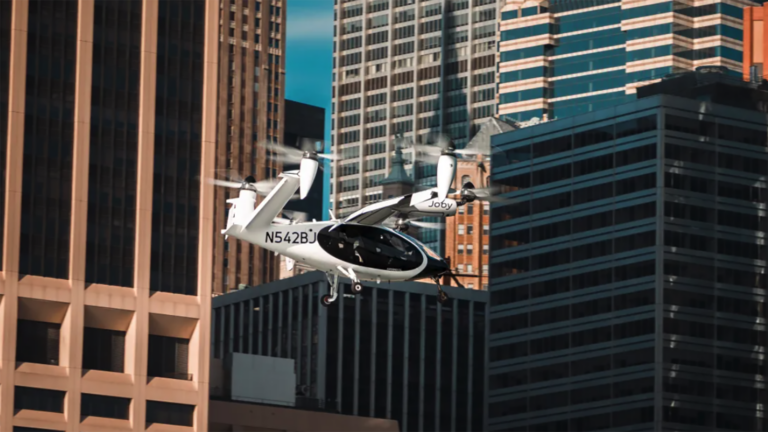Stay Up to Date
Submit your email address to receive the latest industry and Aerospace America news.
Research by NASA and industry has led to progress, but it’s not enough
If all goes as planned, FAA could issue the first type certificate for an electric air taxi design sometime this year. As big a milestone as that will be, it won’t automatically allow these aircraft to begin ferrying passengers and cargo en masse, perhaps one day autonomously.
Among the challenges still to be addressed: obtaining accurate, widespread weather information at low altitudes, especially in urban areas and other dynamic environments, including mountainous regions.
Today’s passenger jetliners spend the majority of their flight time above 30,000 feet, so the majority of low-altitude weather forecasting is clustered around the airports where these planes are quickly taking off and landing on steep trajectories. By contrast, air taxi developers plan for their aircraft to fly almost exclusively below 5,000 feet.
“Most commercial aviation is in what we call the free troposphere, where the effects of ground heating are minimal,” says Grady Koch, an engineer at NASA’s Langley Research Center in Virginia. “But closer to the ground, in the atmospheric boundary layer, there is more turbulence and convection from ground heating during the daytime. It’s a more complex environment to model and to measure, and that complexity leads to some gaps in current modeling, which we are trying to address.”
For more about advanced air mobility, receive the True Mobility newsletter in your inbox.
Koch is among the researchers at NASA, universities and private companies studying how to enhance and refine forecasting at these altitudes, but progress has been slow.
“We’ve been stuck really since the 1990s,” says meteorologist Don Berchoff, founder and CEO of TruWeather Solutions of Virginia. “Below a few thousand feet, there’s only data available right around the busier airports, and it’s not very granular. So the official forecast for your region may be good, but winds or visibility could be a problem in specific locations.”
Over the past few years, Berchoff and TruWeather have researched how to develop better methods of low-altitude weather prediction, funded under four NASA contracts and one Department of Transportation contract. Among the activities was operating Doppler-lidar instruments and other weather-sensing equipment at a testbed range in Hampton, Virginia, to generate 3D models of local winds. Berchoff is currently planning to establish two additional test sites: in Hollister, California, where Boeing subsidiary Wisk Aero is flight testing its all-electric, remotely piloted prototypes; and in the Dallas area, where FAA has authorized drone delivery corridors for research.
Wisk told me that it doesn’t anticipate requiring “weather information beyond that available today” to begin commercial operations later this decade, but that the company welcomed the testing in Hollister. “It’s clear that improved weather information will lead to more efficient flight planning, improved on-time arrival performance, and more effective adverse weather awareness and management.”
Outside of his role at TruWeather, Berchoff also helped develop the first global standard for weather data reporting, published in 2024, which established metrics for weather data that are not tied to the certification or performance of specific instruments or methods. In other words, the standard focuses on the quality of the data rather than the way that information is obtained.
Berchoff emphasized that FAA is not required to incorporate this standard into its regulations, but says that it clear the way for the agency to accept sources of weather information that aircraft operators previously may have not been allowed to consider when making the decision as to whether to fly.
“Currently, there are many heliports out there with very little information about the surrounding weather,” he says, referring to existing takeoff and landing pads for helicopters. “They basically have a choice of expensive certified weather stations or a windsock. But if we allow standard-based data, that can come from a broad variety of instruments that would be more affordable.”
This could include simple optical cameras to detect fog or low visibility, drones that would fly around a heliport to detect any sudden extreme wind gusts, and digital home sensors that interface with a cellphone, he says.
Today, Berchoff estimates that drone operators have to cancel about 30% of their flights because they lack precise low-altitude weather information, specifically long duration-flights that are conducted to inspect pipelines or power lines. He says such delays amount to a “weather tax” that increases costs for operators.
“Even if we only solve 80% of the issues, that is still better than nothing that we have in many situations today,” he says.
The challenges will be even steeper for future urban vertiports located on rooftops and in other spots in close proximity to tall buildings. Air taxi developers won’t be able to afford to frequently cancel flights, so these vertiports will require Doppler-lidar and other sophisticated instruments that can detect wind even without the presence of rain. To that end, Berchoff and others are developing 3D wind maps that combine overlapping data from two Doppler-lidar units to provide a detailed picture of where wind gusts may occur around a landing site, particularly when there are additional obstacles like construction cranes.
Such forecasting also has safety implications, Berchoff notes: “If you have to divert at the last minute because of wind gusts, that could drain your battery, so early detection of wind gusts would be essential.”
Opener caption: One of Joby Aviation’s S4 pre-production prototypes flies in Manhattan during a 2023 demonstration flight. Credit: Joby Aviation
About paul brinkmann
Paul covers advanced air mobility, space launches and more for our website and the quarterly magazine. Paul joined us in 2022 and is based near Kennedy Space Center in Florida. He previously covered aerospace for United Press International and the Orlando Sentinel.
Related Posts
Stay Up to Date
Submit your email address to receive the latest industry and Aerospace America news.




